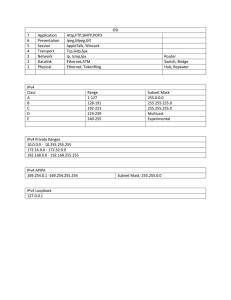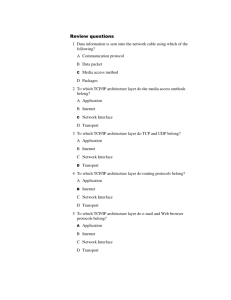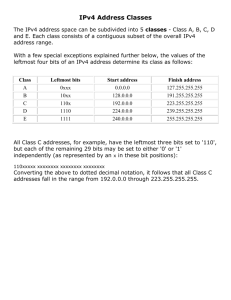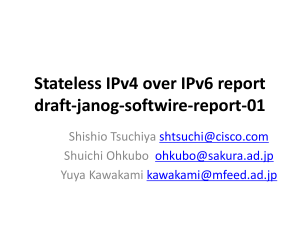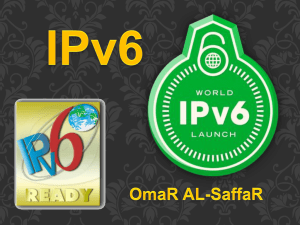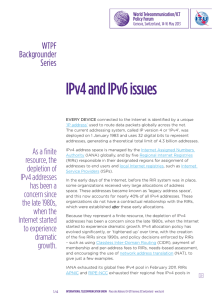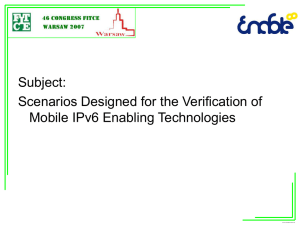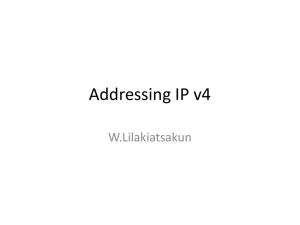IP Addressing Study Guide: IPv4 & IPv6 for CCNA
advertisement
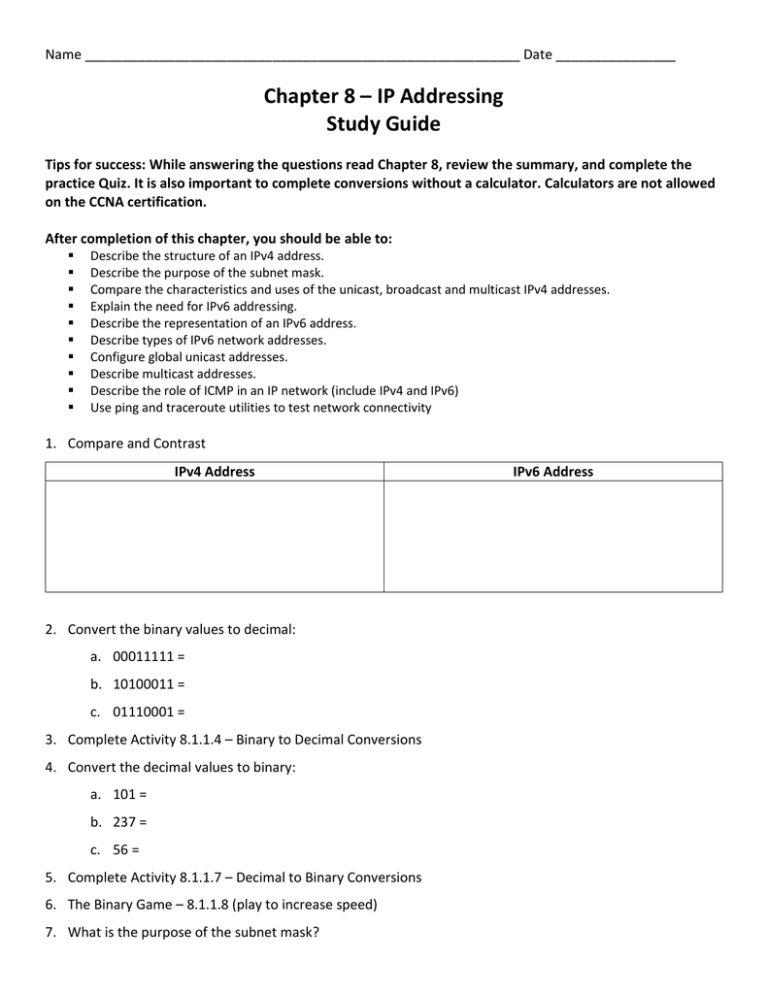
Name __________________________________________________________ Date ________________ Chapter 8 – IP Addressing Study Guide Tips for success: While answering the questions read Chapter 8, review the summary, and complete the practice Quiz. It is also important to complete conversions without a calculator. Calculators are not allowed on the CCNA certification. After completion of this chapter, you should be able to: Describe the structure of an IPv4 address. Describe the purpose of the subnet mask. Compare the characteristics and uses of the unicast, broadcast and multicast IPv4 addresses. Explain the need for IPv6 addressing. Describe the representation of an IPv6 address. Describe types of IPv6 network addresses. Configure global unicast addresses. Describe multicast addresses. Describe the role of ICMP in an IP network (include IPv4 and IPv6) Use ping and traceroute utilities to test network connectivity 1. Compare and Contrast IPv4 Address 2. Convert the binary values to decimal: a. 00011111 = b. 10100011 = c. 01110001 = 3. Complete Activity 8.1.1.4 – Binary to Decimal Conversions 4. Convert the decimal values to binary: a. 101 = b. 237 = c. 56 = 5. Complete Activity 8.1.1.7 – Decimal to Binary Conversions 6. The Binary Game – 8.1.1.8 (play to increase speed) 7. What is the purpose of the subnet mask? IPv6 Address 8. Write the subnet masks below using the prefix length notation (/?): a. 255.255.255.128 = b. 255.255.252.0 = c. 255.255.255.248 = 9. Use ANDing to determine what network each host is on. Tip: you’ll have to convert the values to binary first: a. IP: 200.10.57.91 SM: 255.255.255.224 Network = _________________________________________ b. IP: 172.16.32.10 SM: 255.255.224.0 Network = ___________________________________________ 10. Complete Activity 8.1.2.9 – ANDing to Determine the Network Address 11. What is the difference between a limited broadcast and a directed broadcast? 12. Complete Activity 8.1.3.6 – Unicast, Broadcast, or Multicast 13. Determine if the addresses below are Host Addresses, Network Addresses, or Broadcast Addresses: IP Address with Subnet Mask notation 192.168.1.32/27 200.25.36.200/25 172.16.55.71/29 10.2.3.75/28 Host, Network, or Broadcast 14. Complete Activity 8.1.3.7 – Calculate the Network, Broadcast, and Host Addresses 15. What are Private IP Addresses? List the three ranges of Private addresses: 16. Complete Activity 8.1.4.2 – Pass or Block IPv4 Addresses 17. Fill in the table below: Address Class 1st Octet Range Network and Host parts of an Address Class A Class B Class C Class D Class E 18. List the 3 migration techniques for IPv4 to IPv6: 19. Complete Activity 8.2.1.3 – IPv4 Issues and Solutions Default Subnet Mask Number of possible networks and hosts per network 20. What are two ways to shorten the length of an IPv6 address without changing its value? 21. Complete Activity 8.2.2.5 – Practicing IPv6 Address Representation 22. What is the range for an IPv6 link local address? 23. Complete Activity 8.2.3.5 – Identify Types of IPv6 Addresses 24. What two show commands can be used to verify IPv6 Address settings? 25. List the 4 ICMP messages common to both ICMPv4 and ICMPv6: a. b. c. d. 26. What is a Neighbor Solicitation (NS) message used for? 27. What can be determined with the PING command? 28. What can be determined with the TRACERT command?
